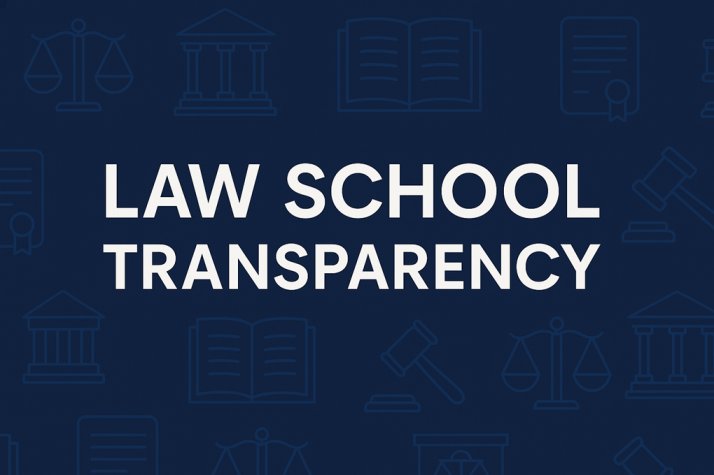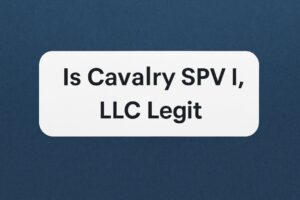Law school has become a major financial risk. Tuition has soared past $70,000 at top private schools. Many public law schools charge over $40,000. Add housing, fees, and books, and total costs cross $200,000.Students take out loans to pay for it. They trust schools to lead them to solid careers. Many never get there. Some graduate without passing the bar.
Others end up in low-paying jobs or outside the legal field.This crisis didn’t happen overnight. Schools spent years selling dreams. Brochures promised high salaries. Websites showed inflated job stats. Rankings pushed prestige over performance.One group stood up against that system. Law School Transparency saw the problem. It acted when no one else would. It exposed how schools reported jobs. It demanded accurate numbers. It gave students tools to make safer choices.
In 2025, that work matters more than ever. Students no longer stay silent. They ask direct questions. They check job data. They want to know what they get for the money.Lawmakers also stepped in. They introduced new loan caps. They pushed schools to lower costs. They called for stronger rules on reporting. Reporters now use school data to track trends and hold leaders accountable.Schools feel the pressure. They can’t hide behind rankings anymore. They must show how many students pass the bar. They must prove their job placement numbers. They must explain tuition increases.Law School Transparency leads this movement. It gives students the facts. It shines light on the system. It makes sure no one walks into law school blind.
Students Want Proof, Not Promises
Law students used to trust what schools told them. Brochures painted a perfect future. Rankings pushed brand names. Everyone wanted top schools with high prestige.That image came at a cost. Students paid six figures for a degree. They borrowed heavily. They believed jobs would follow.Reality looked different. Many graduates faced unemployment. Some ended up in temporary roles. Others left the legal field entirely. They still owed the money.
Law School Transparency exposed that problem. It showed how schools counted part-time jobs as success. It revealed how schools left out low salaries. It highlighted how schools shaped numbers to look good.Students paid the price. They carried debt without results. They trusted schools that sold reputation instead of outcomes.Now, students act differently. They research before they apply. They check bar pass rates. They compare job placement numbers. They ask schools what a degree really delivers.
They want details—not slogans. They expect schools to show full job lists. They ask for salary bands. They look for transparency in aid, not just merit scholarships.Law School Transparency gives them that edge. It makes schools show their work. It flags missing or outdated data. It pushes for facts in every corner of legal education.Today’s students do not follow the old path. They skip schools that can’t prove value. They leave when numbers don’t add up. They know that a name alone doesn’t pay back loans.This shift is permanent. Students now control the process. They use tools. They ask questions. They demand proof not promises.
Schools Face New Rules and Public Scrutiny
Law schools once operated in the dark. They shared little about job outcomes. They focused on rankings. They sold prestige instead of proof.That changed in 2012. The American Bar Association stepped in. It created Standard 509. This rule forced schools to publish real numbers. Schools had to show job types. They had to list salary brackets. They had to report bar pass rates and full tuition costs.Law School Transparency led that push. It called out schools that hid data. It demanded action. The ABA listened. The rule passed. Students finally got the numbers they deserved.
In 2025, new issues now shape the debate. The ABA paused its rule on diversity. That rule, Standard 206, once required schools to improve inclusion. Legal pressure forced the pause. Critics filed lawsuits. Courts may now decide its future.Federal policy also shifted. Congress capped graduate loan amounts. This change hit law schools hard. Students can’t borrow without limit anymore. Schools must now adjust.
Santa Clara Law acted fast. It promised every new student a $16,000 annual scholarship starting in 2026. This offer applies to all, not just top scorers. The school wants to stay accessible under the new loan cap.Other schools are making moves. They boost financial aid. They cut hidden fees. They publish better job stats. They know students compare everything now.
Law schools no longer control the message. They answer to students, lawmakers, and the public. They must prove their worth. They must show value. If they fall short, applicants walk away.Law School Transparency keeps that spotlight on. It tracks compliance. It flags weak data. It holds every school to account.
The Group’s Tools Help Students Stay Informed
Law School Transparency gives students direct access to real data. It does not ask for payment. It does not hide features behind logins. Every tool is free. Every feature is built for clarity.These tools live on the LawHub platform. Thousands of students use them each year. They help applicants compare law schools by results—not rankings.
Each tool serves a purpose.
-
Score Reports give the full picture. They list job types. They show bar exam pass rates. They include average salaries. They break down tuition and loan estimates.
-
The Transparency Index measures honesty. It scores each school on how much data it reveals. High scores mean clear numbers. Low scores mean missing facts.
-
Outcome Charts sort job results by category. Students can see how many grads work in firms, government, or clerkships. They also show how many are still looking.
These tools make a big difference. They remove guesswork. They replace vague marketing with hard evidence.A student can now compare two schools side by side. They can see who offers better outcomes. They can weigh debt against real salaries. They can rule out programs that fail to deliver.
Every student has access. They do not need special credentials. They do not face paywalls. The group keeps these tools open to all.That choice reflects the mission. Law School Transparency does not sell hope. It gives students facts. It helps them avoid costly mistakes.Law school is still a risk. These tools make it easier to avoid bad bets. They turn confusion into confidence.
Law Schools Must Back Claims with Data
Students no longer choose schools based on image. They want results. They ask for proof. They compare numbers before they apply.Schools that publish clear outcomes stand out. They show bar pass rates. They list job types. They provide salary details. These schools win student trust.Other schools still avoid full disclosure. They post vague charts. They skip low salaries. They hide part-time jobs in full-time counts. Those tactics no longer work.
Law School Transparency exposed those tricks. It forced schools to clean up their data. It tracks every detail. It flags schools that fall short.Reporters rely on that data. They investigate gaps in outcomes. They find schools with poor records. They publish facts that students need to know.Advisors use the same numbers. They steer students toward programs that show value. They warn against schools that hide risk.
Lawmakers follow these reports too. They raise concerns in hearings. They ask tough questions. They press for tighter rules and better reporting.Schools that ignore this shift face consequences. They lose applicants. They fall in reputation. They risk public trust.Every claim now faces a simple test: can the school prove it?If not, students will leave. They have options. They have data. They use tools from Law School Transparency to spot red flags early.Law schools can no longer rely on old reputations. They must compete through outcomes. They must earn trust. They must post numbers that match their message.Those that adapt will survive. Those that refuse will fall behind.
Law School Transparency Expands Its Reach
Law School Transparency started with one goal. It wanted to show students the truth. It exposed how schools twisted numbers. It revealed the gap between claims and outcomes.That mission still stands. But the group now does more. It pushes change far beyond websites and reports.The group works with regulators. It brings concerns to the ABA. It urges them to fix weak rules. It calls for stronger oversight. It asks for real penalties when schools hide data.
It also meets with law school leaders. It speaks directly to deans. It joins panels. It offers solutions. It shows how better reporting builds trust.The group helps shape national policy. It joins discussions on student loans. It comments on accreditation changes. It weighs in on admissions reform. It speaks at legal education forums.
Its goals stay firm:
-
Show full outcomes at every school
-
Warn students about debt risks
-
Challenge biased rankings
-
Raise the standard across legal education
It fights for fairness in the system. It highlights schools that block access. It shows how low-income students face more risk. It tracks where diversity efforts fail. It lifts up voices often left out.Law School Transparency does not just report data. It advocates for better rules. It makes schools accountable. It protects the next generation of lawyers.Its reach keeps growing. Its impact keeps building. Its mission keeps gaining ground.
Legal Education Faces a New Era
Law school no longer hides behind glossy brochures. The silence is gone. Students ask questions. They expect answers backed by facts.The conversation has changed. Students now lead it. They understand the cost. They know the risk. They see through the marketing. They do not chase prestige without proof.
Law School Transparency gave students the power to ask. It exposed inflated claims. It revealed how schools misused data. It showed what schools left out. It made truth a requirement—not an option.Schools must now compete in new ways. They must show results. They must prove how many graduates pass the bar. They must list the jobs their alumni hold. They must explain what a degree is worth.Students no longer follow blind paths. They check numbers. They compare schools. They demand real value. They skip schools that fail to deliver.This shift changed legal education. It pushed schools to improve. It forced them to lower risk. It raised the standard for everyone.
Law School Transparency made that happen. It turned confusion into clarity. It gave students control. It built tools that replaced hope with evidence.Today, the system works better. More students make smarter choices. More schools face real pressure. More outcomes are tracked and reported.One reason explains the change. Students stopped guessing. Law School Transparency showed them how.
Disclaimer: This article shares public information on the “Law School Transparency” and does not offer legal advice or promote any legal service. If you have any questions about this, please don’t hesitate to contact us.


